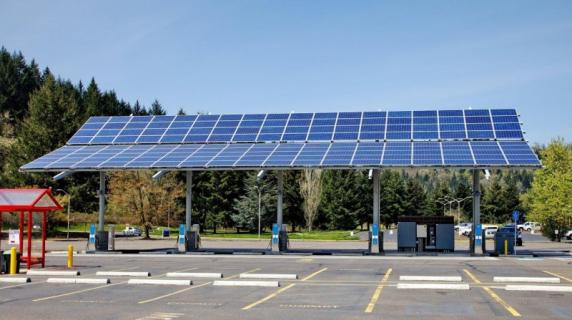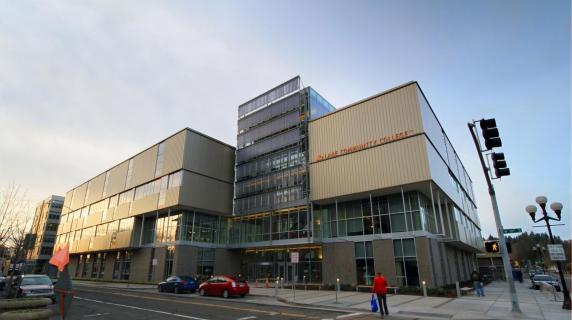Lane strives for excellence in energy education and energy use in campus operations by including students and staff in educational opportunities every step of the way.
Lane's Renewable Energy Systems

Solar Electric:
There is about 43 kW of solar electric generation on site at Lane Community College's main campus, including:
- A total of 6 kW of pole mounted photovoltaic arrays is installed to the east of the Family Childcare Program Buildings 24 thru 27.
- A 36 kW solar station in the west parking lot that feeds renewably generated power into Lane's electric grid and shades nineteen electric vehicle charging stations.
- 3 kW of photovoltaic modules installed by our educational program is on the roof of Building 16.
- Several other small solar electric installations power individual systems like gate motors, water fountains, and emergency telephones can be found across the main campus.

Solar Thermal:
- Solar thermal systems are used to heat domestic water for multiple buildings at the main campus. Using the sun for heating water reduces carbon emissions from natural gas fired water heaters.
- A solar thermal installation on Building 30 at the college's main campus provides domestic water for Building 5 (including locker room showers), Building 7, and Building 30. Excess hot water circulates into the heating water for the campus building system.
- Ground Source Heat Pumps: Ground Source Heat Pump systems are used to heat and cool main campus and downtown buildings. Examples are the Family Childcare Program Buildings 24, 25, 26, 27, and 61.
